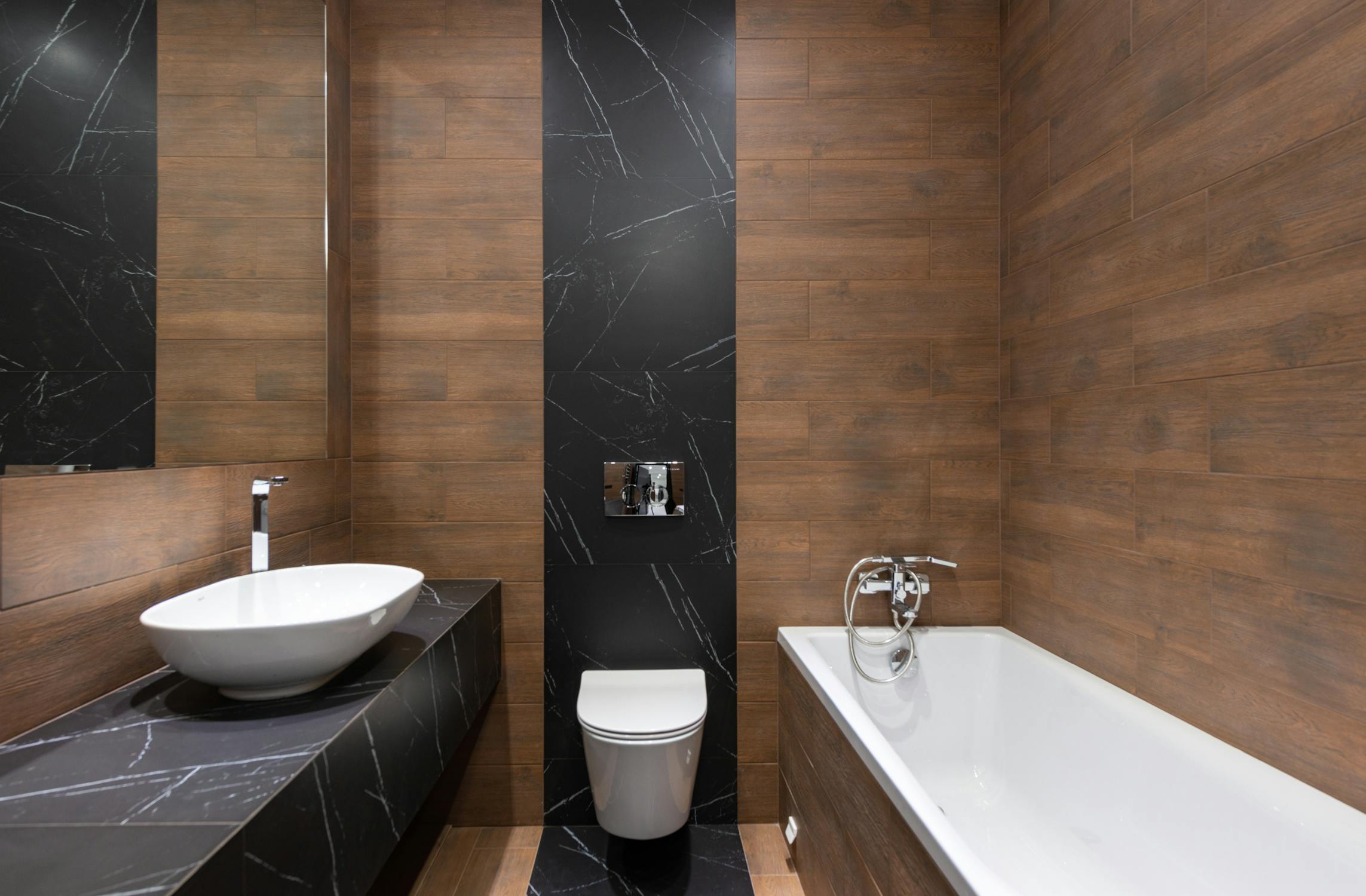Bathrooms are one of the most essential rooms in any home, providing a private space for daily routines and moments of relaxation. Over time, however, bathrooms can begin to look worn and outdated, making regular renovations necessary to keep them functioning well and looking fresh. Renovating a bathroom is a significant project involving planning, budgeting, and, in some cases, hiring professionals.

But how often should this essential room undergo a revamp? In this article, we’ll discuss the ideal frequency for bathroom renovations, factors that influence this timing, signs your bathroom may need an upgrade, and tips for maintaining your bathroom to extend the life of your remodel.
How Often Do You Need To Renovate A Bathroom?
The general recommendation for bathroom renovations is approximately every 10 to 15 years. This timeline is based on the average wear and tear bathrooms experience due to daily use and exposure to moisture. Moisture, combined with fluctuating temperatures, can lead to issues like mould growth, tile cracks, and even damage to walls and floors. However, the exact timing can vary depending on the materials used, the bathroom’s initial construction quality, and personal preferences.
A complete bathroom renovation may not always be necessary every 10 to 15 years, especially if small updates are made over time. Replacing fixtures, repainting walls, and deep-cleaning grout can all help maintain a bathroom’s appearance and functionality. But as styles change and technology advances, a full renovation every decade or so will keep the space both modern and highly functional. Below, we discuss the main factors that influence the renovation timeline and the types of updates to consider.
Key Factors That Affect Bathroom Renovation Timing
Quality Of Materials And Workmanship
- The durability of a bathroom largely depends on the quality of materials and the expertise of the contractors who installed them. High-quality materials like porcelain or ceramic tiles, quartz countertops, and solid brass fixtures tend to last longer and retain their appearance better over time. On the other hand, lower-quality materials may wear out or lose their aesthetic appeal faster, necessitating earlier renovations.
- Additionally, a professional installation will often extend the longevity of a bathroom. Quality workmanship can reduce the chances of problems such as poorly sealed tiles or inadequate
- waterproofing, which could lead to costly repairs or earlier renovations than initially planned.
Frequency And Intensity Of Use
- How often a bathroom is used can significantly impact how quickly it shows signs of wear. Bathrooms that serve a family of five, for example, will likely need updating sooner than a guest bathroom that’s used only occasionally. High-traffic bathrooms experience more frequent wear on elements like floors, fixtures, and tiles.
- In addition, heavy use increases the chances of issues related to moisture, as hot showers and baths create steam and condensation that can lead to mould and mildew growth. Frequent use may also wear down seals around bathtubs and sinks faster, which could cause water to seep into walls or floors, requiring an update to address potential water damage.
Personal Style And Trends
- The appeal of a bathroom can also diminish over time as styles and design trends evolve. Outdated tile patterns, colour schemes, or fixtures can make a bathroom look tired and uninviting. Many homeowners choose to renovate simply because their bathroom no longer reflects their style or matches the rest of their home’s aesthetic.
- Staying on top of design trends can also add value to a home, especially if you plan to sell shortly. Prospective buyers are often drawn to homes with updated bathrooms, as they’re likely to be more efficient, visually appealing, and equipped with modern amenities.
Signs It’s Time To Renovate Your Bathroom
Recognizing the signs that a bathroom needs renovation can save you from costly repairs down the line. Here are some clear indicators that your bathroom may be due for an update:
Visible Wear and Tear
- Cracks in tiles, chipped countertops, peeling paint, and rusted fixtures are all signs of wear and tear that can make a bathroom look neglected. Over time, these issues can worsen, leading to bigger problems if left unaddressed. If you’re noticing these signs, it might be time for a refresh, even if it’s just a partial update.
Persistent Mold and Mildew
- Bathrooms are naturally prone to moisture, but persistent mould and mildew can indicate inadequate ventilation or waterproofing. Mould growth not only makes a bathroom unpleasant to use but can also pose health risks. Upgrading ventilation or replacing water-damaged surfaces can address this issue and create a cleaner, healthier environment.
Outdated Fixtures and Amenities
- Fixtures like faucets, showerheads, and lighting can start to look outdated over time. In addition, older fixtures may not be as water-efficient as modern options, potentially driving up water bills. Replacing outdated fixtures with newer, energy-efficient models can improve both the bathroom’s appearance and functionality.
Inefficient Layout or Lack of Storage
- Many older bathrooms lack sufficient storage or have a layout that no longer meets the needs of the household. If you’re constantly struggling to find space for toiletries, towels, and other essentials, a renovation can help optimize the layout and add custom storage solutions. An efficient layout can make a bathroom feel larger and more comfortable to use.
Desire for Updated Style or Added Luxury
- Sometimes, the decision to renovate is simply about wanting a change. Perhaps you’d like to add luxury features like a soaking tub, a rainfall shower, or heated floors. Renovating your bathroom can allow you to create a personal spa retreat or update the style to reflect current trends.
Tips To Extend The Life Of Your Bathroom Renovation
While a full bathroom renovation can refresh the space, maintaining it well afterwards can help it last longer and delay the need for another update. Here are a few tips to extend the life of your bathroom:
Keep Up With Regular Cleaning and Maintenance
- Frequent cleaning and basic maintenance, such as re-caulking around tubs and sinks, can keep your bathroom looking new for longer. Cleaning tiles and grout regularly will prevent discolouration and reduce the growth of mould and mildew. Also, avoid using harsh chemicals on surfaces, as they can degrade finishes over time.
Invest in Quality Ventilation
- A bathroom fan is essential to prevent moisture buildup that leads to mould and mildew growth. After each shower, run the fan for about 20 minutes to clear out the humidity. You might also consider installing a humidity-sensing fan, which will turn on automatically when moisture levels increase.
Choose Durable Materials
- When planning a renovation, consider choosing durable materials that can withstand daily use and exposure to moisture. For example, porcelain and ceramic tiles are water-resistant and easy to clean, while quartz countertops offer durability and a sleek appearance. High-quality finishes may cost more initially but will save you money on future repairs and replacements.
Upgrade Fixtures and Plumbing as Needed
- Periodically upgrading fixtures can make a significant difference in extending a bathroom’s life. Replacing older faucets, showerheads, and toilets with energy-efficient models can also help reduce water usage and utility bills. Additionally, inspect pipes and seals regularly for leaks, as addressing issues early can prevent water damage.
Conclusion
Renovating a bathroom is a worthwhile investment that can improve both the functionality and aesthetic appeal of this essential room. Generally, bathrooms need a significant renovation every 10 to 15 years, depending on the quality of materials, frequency of use, and evolving design preferences. By paying attention to signs of wear, addressing mould and mildew promptly, and choosing durable materials, homeowners can extend the lifespan of their bathroom and ensure it remains a comfortable, stylish space.
Whether it’s upgrading outdated fixtures, reconfiguring the layout, or adding luxury amenities, a bathroom renovation can be tailored to meet your personal preferences and lifestyle needs. Regular maintenance and careful selection of materials will help you get the most out of your renovation, creating a bathroom that you’ll enjoy for years to come.
Are you looking for more information? Click and visit the modern bathroom renovations, today!
